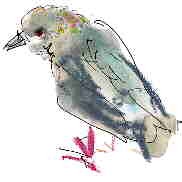|
speaking of "gravity waves"
wikisays domain walls
Wikisays
Domain walls
ARE TOPOLOGICAL SOLITONS*
WHERE
when discrete symmetry is broken
they may coexist with
possible space
Be aware of Barkhauen noise
Blick and Neel walls
external links
and all
_________________________________________________________*
* footnote
topological solitons*, defects, are solutions of quantum field homotopy
(distinct from vacuum solutions) that can be PROVEN TO EXIST because boundary
conditions entail the existence of homotopically distinct solutions boundaries
on boundaries: specifically non-trivial homotopy groups preserving the
differential which cannot decay or be undone or be de-tangled, precisely
because there is no continuous transformation that will map them (homotopically)
to a uniform or "trivial" solution.
*solitons are solitary
waves
insolvable screw dislocations in crystalline materials, skyrmion and Wess-Zumino-Witten
quantum fields drive phase transitions in condensed matter, lambda transition
in universal class systems : screw/edge-dislocations magnetic flux , superconductors,
vortices
The authenticity of a topological defect depends on the authenticity of
the vacuum in which the system will tend towards infinite time elapses;
false and true topological defects distinguished false and true vacuum,
respectively.
BAMB e = mc2 BAMB
grand unified theories
further WIKISAYS: a soliton is a self-reinforcing solitary wave, a wave
packet, or pulse, that maintains its shape while it propagates at a constant
velocity. Solitons are caused by a cancellation of nonlinear and dispersive
effects in the medium. (The term "dispersive effects" refers
to a property of certain systems where the speed of the waves varies according
to frequency. Solitons are the solutions of a widespread class of weakly
nonlinear dispersive partial differential equations describing physical
systems.
The soliton phenomenon was first described by John Russell in 1834
|
